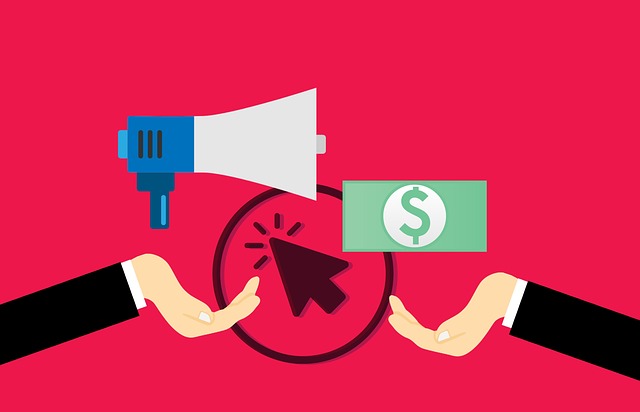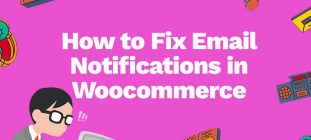
When you think of a smartphone, probably the first thing that comes to mind is Apple.
Or, when you’re thinking of having a refreshing soda during a hot summer day, Coca-Cola might race through your thoughts.
That’s how a successful brand awareness strategy looks like. These companies managed to replace generic terms for the products they sell with their own name.
Although, as a small business owner, you might not reach the levels of the companies we mentioned above, establishing brand awareness should still be a crucial part of your marketing strategy.
Let’s see why.
-
Why Is Brand Awareness Important?
Brand awareness is the first stage of the marketing funnel. It describes the degree of consumer recognition of a product by its name.
That said, brand awareness is the foundation of acquiring new customers. When people are already aware of your brand’s existence, logo, and what it stands for, you’re bound to generate more sales.
After all, people will likely choose a company they’re familiar with over one they’ve never heard of before.
Besides, the more accustomed people are to your brand, the easier it will be for you to introduce new products or services, promote your business, create a loyal customer base, and build a strong reputation.

For example, by increasing brand awareness, you might get consumers to choose you over your competitors, even though their prices are lower.
Or, when looking for certain products, users may type in your business name in the search engine instead of using broader terms.
But how can you get to this point?
Let’s take a look.
How To Build Brand Awareness
-
1. Blogging
Blogging can help you increase brand awareness in multiple ways.
For starters, writing articles covering your niche will allow you to establish yourself as an industry expert.
By doing this, potential customers will get the impression that you know what you’re talking about. Consequently, they’ll trust you more.
Secondly, other content creators may use your articles during their research. This may lead them to mention you in their blog posts and link back to your website.
And finally, by providing quality content, users will likely return to your website from time to time, potentially earning their loyalty as a result.
But when creating content, make sure that it’s in the audience’s interests. You’ll need to provide them with valuable information they could use further down the road.
For example, you could create how-to guides on how to maintain your products.
Also, consider guest blogging. This is a process of pitching your blog posts to other major websites.

This will allow you to put your brand in front of a larger audience. Furthermore, guest blogging is great for earning backlinks, which will help you in SEO.
Speaking of which:
-
2. Search Engine Optimization
Experts at Digital Silk, a company that offers services covering website design in New York, say that Search Engine Optimization (SEO) is an essential part of increasing your brand awareness and visibility.
SEO is the process of increasing your website’s ranking in the Search Engine Results Page (SERP). The higher you rank, the more people will see you upon searching for products or services related to your business.
Thus, you’ll drive more traffic to your website.
Although users may not enter your website right away, SEO still matters. They might access your site the next time they see you in the SERP. Remember the Rule of Seven we talked about?
So how can you increase your rankings?
You can start by optimizing your keywords. These are the terms people use in the search bar to find companies like yours.
That said, you’ll need to find the most popular terms your audience is using and integrate them within your website’s content.
But you’ll also have to factor in your competition. If your competitors already rank high with the keywords you’re targeting, you’ll have a more challenging time increasing your rankings.
You can use tools like SEMrush to find suitable keywords.
Other SEO tactics include acquiring backlinks and tweaking your website, like improving loading time and going mobile-friendly.
-
3. Pay-Per-Click Advertising

The drawback of SEO is that it takes quite a bit of time and effort until you see results. Luckily, there’s a faster alternative.
With Pay-Per-Click (PPC) Advertising, Google will display an ad that will appear right on top of the organic listings. But you’ll have to pay each time a user clicks on the ad.
Again, even if people don’t enter your website, they will still see your ad on top of the SERP, increasing brand awareness.
Furthermore, doing PPC and SEO at the same time is a good idea. That’s because if you manage to rank in the top places of the organic search results and appear in the advertisements section.
Your website will occupy more real estate in the SERPs.
Consequently, you’ll increase your chances of getting users to enter your website.
-
4. Referral Programs
92% of consumers will trust recommendations from their peers.
So how can you use this to your advantage?
If satisfied, maybe previous customers will spread the word about your products or services with their friends and family. So why not motivate them to do it by implementing a referral program?
This way is a great way to acquire new customers without doing much work. Instead, you’ll hand over the job to your previous customers.
But, to make it work, you’ll have to offer an incentive.
For example, you could offer a discount both for the new customer and the person who brought him in.
-
5. Social Media Focus
There’s no surprise that gaining a social media presence is crucial for your brand awareness strategy.
But, many businesses make the mistake of trying to be active on every platform available. Consequently, they are often unable to post consistently on all their accounts.
It may still not seem like such a big deal, right?
Here’s the thing: The rule of seven states that a prospect needs to interact with a brand around seven times before making a purchase.
So by posting rarely, you’ll only prolong the time it takes to get a user to buy from you.
That said, consider shifting most of your efforts towards the platform where the majority of your audience hangs out.
Diversify your posts so you can appeal to different segments of your audience. You’ll have to switch between video content, blog posts, visuals, etc.

You shouldn’t ditch the other social platforms, though. They’re still important for your brand awareness. But it’s best to be more active on the platform you know that works for you.
-
6. Infographics
Infographics are 30 times more likely to be read in their entirety compared to blog posts or news articles.
What’s more, infographics on social media are shared three times more than other type of content.
That’s because infographics are fun, eye-catching, and easy to digest.
In other words, you must use this type of content in your social media posts.
Infographics will ensure that your follower base gets the message while exposing your brand to a broader audience at the same time.
-
7. Contests and Giveaways
Speaking of social media and shareability, hosting contests and giveaways is another effective way to spread brand awareness.
After all, everybody likes free stuff. So once they get word of it, people will flock to your social media page. And will most likely bring their friends as well.
For example, you can host a contest where you’d get users to post a picture showcasing one of your products. The one that gets the most votes wins.
This way, participants will share their posts with their friends and family to get more votes. Thus, increasing your brand awareness.
-
8. Mobile-Friendliness
Mobile devices generate almost 55% of all web traffic.
If your website is not designed with small screens in mind, think about how many customers you’re missing out on. Not to mention Google will drop your rankings as well.
When going mobile-friendly, you’ve got three options: opting for a responsive, adaptive, or mobile-first approach.
We’ve talked with a few companies that do web design in San Diego, and they said that going responsive is the most viable option, as it’s the most cost-effective.
Responsive design is a web design approach that allows web pages to automatically adapt to the device’s screen size that is being viewed on.
Consequently, responsive design will ensure that your website provides a consistent user experience across all types of devices.
-
9. Influencer Marketing
Influencers are social media personalities that have a large, loyal, and highly engaged following.
They are typically viewed as experts within their niche and can affect the purchase decisions of their audience.
Influencer marketing can do wonders for your brand awareness. So you should consider working with a few influencers.
To maximize efficiency, do some research and find the ones that fit your business the best. After that, ask them to publish a piece of content on their page that promotes your product.
In terms of payment, some influencers may charge you money, while others may accept free products.
-
Takeaways
All in all, brand awareness is a significant factor in your business’s success. So you’ll have to take it seriously.
To stay on top of your game, make sure that you’re involved with your audience. Provide valuable content and engage with your followers on social media.
In terms of visibility, SEO and PPC can make a noticeable difference.
And finally, this is not a one-time thing. There will always be room for improvement. You’ll need to keep track of your performance and test new strategies to see what’s working and what’s not.
Author bio
Travis Dillard is a business consultant and an organizational psychologist based in Arlington, Texas. Passionate about marketing, social networks, and business in general. In his spare time, he writes a lot about new business strategies and digital marketing for DigitalStrategyOne.


















